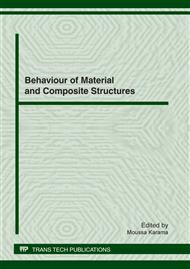p.42
p.55
p.67
p.79
p.89
p.102
p.115
p.126
p.139
Tribological Behaviour of Stellite Matrix Composites for High Temperatures Applications
Abstract:
Extreme working conditions affect material used as friction components in transportation field: they rapidly reach their limits and critical parts require to be regularly replaced. Alternative solutions withstanding higher operating conditions imply to find innovative materials. Stellite matrix composites including various solid lubricants, WS2 and h-BN, able to admitextreme conditions were developed using a Spark Plasma Sintering technique, which makes possible the formation of new microstructures out of reach by conventional means. Sliding tests were conducted using a pin-on-disc tribometer in air at 450°C, with a velocity of 0,25 m/s and various normal load ranged from 2.5 to 40 N. Influence of solid lubricant content and sensitivity to test parameters were studied in terms of friction and wear responses of the contacting materials. Friction properties are equivalent to Stellite ones and sometimes lesseffective. A reduction of wear is quantified for many composites, and the best behavior is observed for those that contain WS2. In agreement with the third body approach, interpretations are proposed to describe the interphase dynamics within the contact.
Info:
Periodical:
Pages:
89-101
Citation:
Online since:
January 2012
Keywords:
Price:
Сopyright:
© 2012 Trans Tech Publications Ltd. All Rights Reserved
Share:
Citation:


